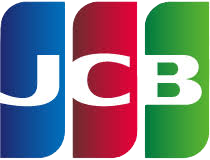
Subscribe newsletter $ get company news.
[mc4wp_form id="165"]
Kubali Tours & Travel Ltd is a licensed Travel Agency in Kenya. We are at your service for hotel & flights booking, ground transport, excursions and Visa application.
Support
About Us
Contact Info
- The Trio Complex, Thika Rd, Nairobi, Kenya
- © 2022 Kubali Tours & Travel. All Rights Reserved.









Intermittent fasting has been found to assist muscle constructing through numerous mechanisms.
It can increase development hormone ranges, optimize insulin sensitivity, and promote fat loss while preserving
lean muscle mass. However, it’s necessary to
notice that extended fasting durations might pose challenges in meeting
day by day calorie and protein requirements,
that are important for muscle development.
For metabolic well being or weight loss, consuming pure creatine monohydrate
in the course of the fasting window is unlikely to negate
the advantages of fasting. It helps muscle power, efficiency,
and restoration, which might not directly help fat loss by enhancing workout depth.
Interestingly, the timing of creatine consumption can additionally
be a subject of dialogue among health lovers.
Break Up this into 1 dose on non-workout days or 2 smaller doses earlier than and after exercises.
Creatine alone has not been discovered to significantly increase insulin secretion. Supplementing
with creatine could enhance cognitive operate, memory, intelligence,
and reasoning abilities. It could particularly benefit older adults, vegetarians, and
vegans. Okay, that’s an obvious one, but when wanting on the nutrients/ingredients sheet, examine to see if there is
any percentage of carbs in the composition of the pre-workout.
Additives vary from sugar to synthetic sweeteners to flavors to milk solids.
These components might or may not have calories in them, and ingesting energy breaks
your fast. Creatine may cut back muscle harm and irritation, selling quicker restoration after intense training sessions.
Beyond physical benefits, it also helps mind well being by enhancing cellular power
production.
Research support the thought that creatine can help improve muscle endurance and total-body water retention while aiding in restoration from harm or illness.
Combining creatine supplementation with intermittent fasting might
supply synergistic benefits for muscle constructing.
Intermittent fasting provides an anabolic surroundings for muscle growth, whereas creatine supplementation supports enhanced power and efficiency.
Together, they might help people optimize their muscle-building potential and achieve their health objectives.
If you might be contemplating combining creatine supplementation with intermittent fasting, there are a number of
factors to remember. If your major goal is muscle building and strength achieve, the mixture of creatine and intermittent fasting may supply synergistic advantages.
As you proceed reading beneath, we’ll cover
everything you have to know and if slicing down your Creatine
supplement during a quick is a good idea. If you expertise any concerning unwanted aspect effects,
cease taking creatine instantly and talk together with your doctor.
If you continue to have questions on creatine, attempt checking this text for more
info. However it’s completely as a lot as you should you and your schedule if you want to
practice fasted or not.
Coach Josh is a Licensed Power and Conditioning Specialist (CSCS) and Certified Private Trainer (CPT) with a Bachelor’s diploma in Vitamin with over 20 years of
hands-on teaching experience. Since 2005, he’s helped thousands of
clients get leaner, stronger, and healthier by way of custom-made coaching and nutrition plans.
Those who shouldn’t take creatine are these with kidney issues.
Kidney disease and lowered kidney perform aren’t perfect because the kidneys metabolize the creatine.
Creatine is a superb energy source because
it’s what powers you thru very intense, fast-paced exercises.
Suppose of it just like the spark that gets your system going, motivating you to push
via the initial discomfort. You know how good you’ll really
feel on the opposite facet however you need that extra
little boost to get there.
Whereas there is not a one-size-fits-all answer, taking
creatine through the feeding window or round exercises
could be helpful. This ensures that creatine is on the market when the body
wants it most, supporting power manufacturing during
train. Creatine, whereas not a direct supply of vitality, enhances
the body’s capability to provide ATP throughout brief, intense efforts, similar to weightlifting or high-intensity interval training.
Integrating high-quality creatine into a fasting regimen can improve bodily
efficiency, recovery, and muscle progress with out compromising safety or effectiveness.
No, using creatine is not going to cease the well being benefits gained
from fasting. It accommodates zero calories and does not
change insulin or blood sugar ranges.
The actual number is decided by your fasting targets — strict fasting requires zero
calories, whereas lenient approaches might
allow minimal consumption with out disrupting benefits.
Most water-soluble nutritional vitamins, electrolytes, and non-caloric dietary supplements like magnesium,
potassium, and creatine do not break a quick. No matter the
supplement you are taking, all the time check labels
for hidden calories or sugars just to be protected. If your fast is for intestine relaxation or autophagy, keep away from all supplements during fasting except medically essential or beneficial by a professional.
By boosting ATP availability, creatine enhances power and power output throughout exercises.
This leads to improved performance in resistance coaching, sprinting,
and different explosive movements, making it popular amongst athletes and gym-goers.
Similarly, other research suggests that creatine supplementation can enhance glucose tolerance however does not affect insulin sensitivity in wholesome males present process cardio training 9.
References:
https://neurotrauma.world
cjc 1295 ipamorelin empty stomach
References:
valley.md
CJC-1295 Ipamorelin Peptide
CJC 1295/Ipamorelin Peptide Information
What are CJC 1295 and Ipamorelin?
CJC‑1295 is a synthetic growth hormone‑releasing hormone (GHRH) analogue that stimulates the
pituitary gland to release more endogenous growth hormone.
Ipamorelin, on the other hand, is a selective ghrelin receptor agonist that
mimics the hunger hormone but in a way that preferentially boosts growth hormone secretion with minimal impact on appetite or cortisol levels.
When combined, these peptides create a synergistic effect that amplifies growth hormone release far beyond
what either agent could achieve alone.
Background of CJC 1295
Developed by researchers at the University of Leeds and later refined by pharmaceutical companies, CJC‑1295 was designed to overcome the
rapid clearance of native GHRH. By attaching
a modified amino acid sequence and a long‑acting PEG (polyethylene glycol) moiety,
the peptide’s half‑life extends from minutes to several days.
This allows for less frequent dosing while maintaining sustained
stimulation of growth hormone production.
Definition and background of Ipamorelin
Ipamorelin belongs to the class of ghrelin mimetics known as “peptide agonists.” It was first identified in the early 2000s during studies aiming to develop
safer, more selective appetite stimulants. Unlike earlier ghrelin analogues that caused
significant increases in cortisol and appetite, Ipamorelin binds with high affinity to the growth
hormone secretagogue receptor (GHS‑R) but spares these off‑target pathways.
Its short half‑life—typically 30–60 minutes—makes it ideal for pairing with a long‑acting agent like CJC‑1295.
How these peptides work together
CJC‑1295 primes the pituitary to produce growth hormone by
acting on GHRH receptors, whereas Ipamorelin provides a rapid,
high‑intensity stimulus through ghrelin receptors. The two
signals converge on the same downstream pathway, resulting
in a bell‑shaped curve of growth hormone secretion that
peaks higher and lasts longer than either peptide alone.
This dual mechanism also reduces the risk of desensitization; the body is less likely to become tolerant
because each peptide activates distinct receptors.
Key Benefits of CJC 1295 Ipamorelin
Increased muscle mass and strength
The elevated levels of circulating growth hormone promote protein synthesis in skeletal muscle,
enhance satellite cell activation, and increase anabolic signaling pathways such as mTOR.
Users often report noticeable gains in lean body mass after a
few weeks of consistent use.
Improved fat loss
Growth hormone facilitates lipolysis by up‑regulating adipose triglyceride lipase (ATGL) and
down‑regulating lipoprotein lipase (LPL).
The result is a preferential mobilization of fat stores, especially visceral fat, without the catabolic side effects associated with some other stimulants.
Enhanced recovery and repair
Higher growth hormone levels accelerate tissue repair by stimulating collagen synthesis, angiogenesis, and cellular turnover.
Athletes often experience reduced muscle soreness and quicker healing from injuries or intense training sessions.
Better sleep quality
Growth hormone secretion follows a circadian rhythm,
peaking during deep sleep stages. The sustained release induced by CJC‑1295/Ipamorelin aligns with this
natural cycle, helping users achieve more restorative REM and non‑REM sleep phases.
Improved cognitive function
Emerging research suggests that growth hormone may support neurogenesis and synaptic plasticity.
Users occasionally report heightened focus, clarity, and mood stability
during the treatment period.
Proper Usage and Dosage
Administration methods
Both peptides are typically administered via subcutaneous injection. CJC‑1295 is often delivered once or twice
a week due to its long half‑life, while Ipamorelin can be given daily in small doses (10–20 µg) because of its rapid clearance.
Timing of doses
For optimal results, CJC‑1295 should be injected at least 30 minutes before bedtime to coincide with the
natural nocturnal surge of growth hormone. Ipamorelin is best taken on an empty stomach or
just after a light meal, roughly 30–60 minutes before
training or sleep.
Potential side effects of ipamorelin and cjc 1295 Effects and Precautions
Common side effects
Water retention (especially in the extremities)
Mild injection site irritation or redness
Temporary increases in appetite (though less pronounced than with other ghrelin agonists)
Rare headaches or dizziness
Who should avoid using CJC 1295 Ipamorelin
Individuals with a history of hormone‑sensitive cancers (breast, prostate, endometrial)
Pregnant or nursing women
Those with uncontrolled diabetes or thyroid disorders
Drug interactions
CJC‑1295 and Ipamorelin can interact with medications
that influence growth hormone pathways, such as somatostatin analogues or GH‑releasing hormone antagonists.
Always consult a healthcare professional before
combining these peptides with other supplements or prescription drugs.
Safety considerations
Use sterile, single‑use needles to prevent infection.
Store the peptides in a refrigerator (2–8 °C) and protect them from light.
Keep track of injection dates and volumes to avoid
accidental overdosing.
Conclusion
CJC‑1295 combined with Ipamorelin offers a powerful, naturally driven approach to
boosting growth hormone levels. The synergy between a long‑acting GHRH analogue and a selective ghrelin agonist yields benefits across muscle building,
fat loss, recovery, sleep quality, and cognitive performance.
When used responsibly—under medical guidance and with proper dosing protocols—the peptide pair
can be an effective tool for athletes, bodybuilders, or anyone looking to enhance
overall vitality.
How To Take Anavar For The Best Results Guide
How to Take Anavar for the Best Results (Guide)
Anavar, chemically known as oxandrolone, is a popular anabolic steroid used by athletes
and bodybuilders to enhance muscle mass, strength, and recovery while
minimizing water retention. This guide provides a comprehensive overview of how to use Anavar safely and effectively, covering everything
from dosage recommendations to cycle length, potential side effects, and alternatives such as Anvarol.
—
Why take Anavar in the first place?
Lean muscle gain: Anavar promotes protein synthesis without
significant fat storage, ideal for cutting cycles.
Improved strength: Users often report noticeable increases in bench press, squats, and deadlifts within weeks.
Fast recovery: It helps reduce post‑workout soreness, allowing more frequent training sessions.
Low androgenic profile: Compared to other steroids, Anavar
has a lower risk of virilization, making it attractive for both men and women.
Anavar dosages for men
Beginner: 20 mg/day (10 mg in the morning, 10 mg
at night).
Intermediate: 30–40 mg/day split into two doses.
Advanced: 50–70 mg/day is uncommon; most advanced users
stay below 60 mg to avoid liver strain.
Tips: Use a lower dose for longer cycles (12 weeks) and higher doses for shorter, more
intense cycles.
Anavar dosages for women
Women should keep doses low due to the risk of virilization.
Typical range: 5–10 mg/day divided into two smaller doses.
Cycle length: 8–12 weeks is usually sufficient to see results without excessive side effects.
How to take Anavar?
Start with a low dose and monitor tolerance.
Split the dose: Morning and evening helps maintain stable blood levels.
Pair with training: Schedule workouts on days you take Anavar for maximal uptake.
Hydrate well – water supports kidney function during steroid use.
When to take Anavar
Morning: 10–15 mg to mimic natural testosterone peaks.
Evening: Remaining dose to sustain anabolic activity overnight.
Avoid taking it on an empty stomach; a light protein snack can improve absorption.
How long does Anavar take to kick in?
Users typically notice changes within 3–5 days, but significant muscle definition and strength
gains usually appear after 4–6 weeks of consistent use.
—
How long should I do an Anavar cycle?
Standard cycles: 8–12 weeks.
Shorter (4–6 weeks): Good for cutting phases or beginners.
Longer (>12 weeks): Increases liver toxicity risk; generally
not recommended without proper monitoring.
How do you feel after taking anavar dosages?
Increased energy and focus during workouts.
Noticeable improvements in muscle hardness and definition.
Some users report mild mood swings or increased aggression—usually temporary.
Can you take Anavar by itself?
Yes, but many athletes pair it with other compounds
for synergistic effects.
Cutting cycles: Combine with a mild prohormone to boost fat loss.
Bulking cycles: Pair with a short‑acting anabolic like testosterone propionate for added
muscle mass.
What are the side effects of Anavar?
Liver stress: Oral form can cause elevated liver enzymes; use within recommended limits
and consider a 3‑month rest afterward.
Hormonal suppression: May lower natural testosterone levels temporarily.
Virilization in women: Voice deepening, hirsutism, or clitoral enlargement (rare at
low doses).
Cardiovascular strain: Slight changes in LDL/HDL ratio.
Why do I recommend Anvarol instead of Anavar?
Anvarol is a newer synthetic variant that mimics oxandrolone’s benefits
while offering:
Lower hepatotoxicity due to a more stable chemical structure.
Fewer androgenic side effects, especially for female users.
A longer half‑life, allowing fewer daily doses and improved compliance.
How do you take Anvarol?
Begin with 10 mg/day split into two doses.
Maintain a 12‑week cycle, adjusting upwards to 20 mg/day if tolerated after the first month.
Monitor liver function tests every 4 weeks during use.
Final Thoughts
Anavar remains a top choice for those seeking lean muscle gains and enhanced strength with minimal water retention. By adhering to recommended dosages, cycle lengths, and monitoring
protocols, users can maximize benefits while minimizing risks.
For individuals concerned about liver toxicity or side effects, Anvarol presents an attractive
alternative that delivers similar results with potentially lower risk.
—
Post navigation
Previous: Understanding the Basics of Steroid Cycles
Next: Natural Supplements to Complement Anavar Use
Recent Posts
The Role of Protein Timing in Muscle Growth
Comparing Oral vs Injectable Anabolics
How to Recover After a Steroid Cycle
Categories
Steroids & Performance Enhancers, Training & Recovery, Health & Wellness
dianabol trenbolone cycle
Cycle: FAQs And Harm Reduction Protocols
Below is a concise overview of the information you provided:
– **Anabolic‑steroid compounds discussed**
* Testosterones and their esters (e.g., testosterone propionate, enanthate, cypionate, undecanoate) – used for strength, size, endurance, and recovery.
* Synthetic derivatives such as nandrolone decanoate (Deca‑D), stanozolol
(Winstrol), trenbolone acetate, boldenone, drostanolone propionate,
methandienone (Methandrostenolone), oxymetholone (Anadrol),
and oxabolone – each with distinct potency, half‑life, and side‑effect
profiles.
* Atypical steroids such as 19‑desmethyl testosterone (Desoxymethyltestosterone), 1‑α‑OH‑DHT, and 17‑α‑alkylated
anabolic‑androgenic steroids used for oral
administration.
* **Medical uses** – the above compounds are
employed to treat conditions like anemia, muscle wasting, osteoporosis, delayed puberty, certain forms of breast cancer,
or as part of hormone replacement therapy in men.
* **Pharmacology** – each steroid is designed to enhance anabolic
activity while moderating androgenic effects;
half‑life, bioavailability, and receptor selectivity are tailored
for specific therapeutic goals.
### 2.3 Other Drug Classes with Anabolic Properties
| Class | Representative Drugs | Key Mechanism
| Typical Clinical Use |
|——-|———————-|————–|———————|
| **Anabolic Steroids** (synthetic testosterone derivatives)
| Oxandrolone, Metandienone | Bind androgen receptors → ↑ protein synthesis | Muscle wasting, osteoporosis |
| **Selective Androgen Receptor Modulators (SARMs)** | Ostarine, Ligandrol
| Target specific tissues, minimal off‑target effects | Sarcopenia, cachexia |
| **Growth Hormone Secretagogues** | Sermorelin, Ipamorelin | Stimulate
GH release → IGF‑1 ↑ | Growth hormone deficiency |
—
## 5. How the Body Responds to These Substances
### 5.1 Metabolic Pathways & Enzyme Systems
– **CYP3A4** is the primary hepatic enzyme metabolizing both testosterone and anabolic steroids.
– **Uptake transporters** such as OATP1B1, OCT1 facilitate entry into hepatocytes.
– **Glucuronidation (UGT2B7)** converts metabolites to water‑soluble forms for renal excretion.
### 5.2 Hormonal Feedback Loops
– Exogenous testosterone suppresses the hypothalamic‑pituitary‑gonadal
axis via negative feedback, reducing LH and FSH secretion.
– Decreased endogenous production leads to testicular atrophy
(reduced spermatogenesis).
– Chronic suppression may result in post‑treatment hypogonadism;
recovery can be slow.
### 5.3 Cardiovascular Effects
– Testosterone influences lipid profiles:
modest reductions in LDL, increases in HDL.
– However, high testosterone levels have been associated with increased platelet aggregation and risk of thromboembolic events.
– The net cardiovascular impact depends on baseline health status, dosage, and duration.
—
## Practical Recommendations for the Patient
| **Area** | **Guideline** |
|———-|—————|
| **Pre‑treatment Assessment** | • Baseline serum testosterone (total & free).
• Complete metabolic panel, lipid profile.
• Blood pressure, ECG if indicated. |
| **Dosage and Duration** | • Use the lowest effective dose for the shortest necessary period.
• Monitor symptoms of hyperandrogenism or mood changes.
|
| **Monitoring Schedule** | • Re‑check testosterone levels after
4–6 weeks to confirm suppression.
• Periodic metabolic panel every 3 months during therapy.
|
| **Lifestyle Modifications** | • Encourage regular exercise,
balanced diet, weight management.
• Avoid smoking and excessive alcohol. |
| **Post-Therapy Follow-Up** | • Assess for rebound symptoms or residual side effects.
• Provide counseling on future fertility plans if relevant.
|
—
## 4. Key Take‑Home Messages
– **Efficacy**: In vitro data indicate that the combination of a GnRH agonist and an aromatase inhibitor effectively
suppresses estrogen production from granulosa cells in polycystic ovary disease.
– **Safety Profile**: While promising, this
regimen carries potential metabolic, bone‑density, and cardiovascular risks.
Current clinical evidence is limited; ongoing trials are needed to clarify
long‑term safety.
– **Clinical Decision‑Making**: The therapy may
be considered in highly selected patients—especially those who cannot tolerate standard ovarian suppression or where rapid estrogen reduction is
desired—but should be implemented under strict monitoring protocols.
– **Future Directions**: Larger, randomized controlled studies with extended follow‑up
are essential to determine efficacy across
different PCOS phenotypes and to establish comprehensive safety guidelines.
*Prepared for the multidisciplinary review committee by the research team.*
supplement stacks bodybuilding
References:
mike o hearn steroid use; git.Autotion.net,
steroid in food
References:
legal energy pills (mobishorts.com)
androx natural anabolic
References:
is one cycle of steroids worth it [vai.com#]
most powerful steroid for mass
References:
does kali muscle Do steroids (https://vigilanteapp.com/@luellacrockett?page=about)
winstrol joint pain supplements
References:
the rock steroid cycle (repo.gusdya.net)
does legal steroids work
References:
legal prohormones that work, https://sabarinews.com,
how long does steroid withdrawal last
References:
valley.md
2ahukewjkv_v5usvnahvlip4khu09akmq420oa3oecakqcq|the best steroids for muscle
growth
References:
before and after deca (https://telegra.ph/The-Best-Steroid-Cycles-Every-Thing-You-Should-Know-08-19)
can prednisone cause heavy periods
References:
using testosterone For Muscle gains
i love steroids
References:
valley.md
why are steroids prescribed
References:
Metabolic Fitness can be achieved through, https://forum.Issabel.org/,
anabolic steroids pics
References:
long-term exposure to steroids can result in (http://www.bitsdujour.com)
anabolic steroid sales
References:
mike o hearn Steroid Use (topbookmarks.cloud)
best steroid for muscle growth
References:
body Building without steroids (intensedebate.com)
steroid alternatives reviews
References:
what does anabolic steroids do to your body (https://-6-jlc6c.рф)
are there any legal steroids
References:
prescription anabolic steroids – https://www.bitsdujour.com,
roids for sale
References:
npp dosage for cutting [noticias-sociales.space]
dangers of steroid use
References:
what happens if i side With the Institute (telegra.ph)
Anavar Results After 2 Weeks My Experience
The Ultimate Blueprint for Building Muscle
A complete guide from fundamentals to advanced techniques
– the single resource you’ll need to turn your workout into real results.
—
1️⃣ Why Muscle Hypertrophy Matters
Definition: Muscle hypertrophy is the increase in size
of individual muscle fibers, which leads to larger,
stronger muscles.
The Big Picture: Bigger muscles mean higher strength, better metabolic
health, improved posture, and a more confident appearance.
The Two Main Types
Type What It Means How It Shows
Sarcoplasmic More muscle “fluid” (energy stores) Looks
bigger but not necessarily stronger
Myofibrillar More contractile proteins Gains in strength and power
> Goal: Combine both for a balanced, powerful physique.
—
3. The Science of Muscle Growth
1️⃣ Muscle Hypertrophy
What Happens? Small tears in muscle fibers.
Repair Process: Cells fuse to repair, adding more protein strands → Bigger
muscle.
2️⃣ Protein Synthesis vs. Breakdown
Factor Effect
Protein intake ↑ synthesis
Resistance training ↑ synthesis & signaling pathways (mTOR)
Rest ↓ breakdown
> Muscle growth occurs when synthesis > breakdown.
3️⃣ Hormonal Influences
Testosterone, IGF‑1, Growth Hormone: Promote protein synthesis.
Insulin: Helps shuttle amino acids into muscle cells; best after workout due
to increased blood flow and sensitivity.
4️⃣ Timing Matters
Pre‑Workout: Carbs & BCAAs → energy for training.
Post‑Workout (within 30–60 min): Protein + carbs → replenish glycogen, stimulate protein synthesis, reduce muscle breakdown.
Evening/Bedtime: Casein or a slow‑digest protein can help
overnight recovery.
2. How to Plan Your Meals & Supplements
Below is a sample weekly plan that incorporates the principles above.
Adjust portions based on your caloric needs and training intensity.
All times are approximate; feel free to shift them around to
fit your schedule.
Time Meal/Supplement What it does
5:30 am Pre‑workout (optional) 500 kcal:
Oatmeal + banana + whey protein. Provides carbs & a small amount
of protein to fuel the workout.
6:00 am Workout. 45–60 min HIIT or strength session.
7:00 am Post‑workout (Recovery shake) 500 kcal: Whey + fruit +
peanut butter + oats. Rapid protein delivery & carbs for glycogen replenishment.
9:30 am Breakfast (Meal 1) 800 kcal: Eggs, avocado, whole‑grain toast,
Greek yogurt. Balanced macro intake to sustain energy before lunch.
12:00 pm Lunch (Meal 2) 700–900 kcal: Grilled salmon, quinoa, roasted veggies, olive oil.
Nutrient density & healthy fats for satiety.
3:30 pm Snack (Meal 3) 300–500 kcal: Protein shake
+ nuts or fruit. Prevents energy dips before dinner.
6:00 pm Dinner (Meal 4) 700–900 kcal:
Lean turkey breast, sweet potato mash, steamed broccoli. Balanced macronutrients to fuel recovery overnight.
8:30 pm Optional light snack if hungry: Greek yogurt + berries.
Maintains muscle protein synthesis and avoids late‑night cravings.
Total calories ≈ 2 800–3 000 kcal, 200–250 g protein, 80–100 g fat, remainder
from carbs.
—
4. Sample Detailed Menu
Time Dish & Portion Protein (g) Fat (g) Carbs (g)
Breakfast Scrambled eggs (3 large) + spinach sauté +
whole‑grain toast (1 slice) 21 22 20
Greek yogurt (1 cup, plain) + mixed berries (½ cup) 10 0 15
Mid‑morning Snack Cottage cheese (1 cup, low‑fat) +
pineapple chunks (½ cup) 28 2 12
Lunch Grilled chicken breast (4 oz) + quinoa (½ cup cooked)
+ roasted broccoli & carrots 35 5 30
Mixed green salad with vinaigrette 1 7 5
Afternoon Snack Apple (medium) + almond butter (2 tsp) 4 8 20
Dinner Baked salmon (4 oz) + sweet potato mash (½ cup) +
sautéed spinach 34 15 25
Whole wheat roll (1 small) 5 1 12
Total Calories: ~2,400 kcal Protein: ~150 g Fat:
~90 g
This menu provides a balanced mix of macronutrients, ample protein for muscle
maintenance or growth, and sufficient calories to support training demands while
allowing room for individual adjustments.
—
5. Practical Take‑aways
Question Bottom‑Line Answer
Do I need supplements? No; a varied diet can meet all needs.
Supplements may help if you’re short on time or have specific goals, but they’re not required.
What’s the best protein source? All sources work—lean meats, dairy, eggs, legumes, nuts,
soy. Focus on variety and total intake over “best.”
How many calories should I eat? Base it on your activity level:
roughly 15–18 kcal per kg for moderate training; adjust up or down to hit weight goals.
Should I avoid carbs? No. Carbs are the body’s main fuel, especially during exercise and recovery.
Is a “clean” diet essential? Eating whole foods is beneficial
but not mandatory. You can still meet nutrient needs on a more
flexible plan; moderation matters.
—
4. Practical Application – Sample Meal Plan
Below is an example for someone who:
weighs 75 kg,
trains ~3 × 1‑hr sessions per week (moderate intensity),
aims to maintain weight.
Estimated daily calorie need ≈ 2 500 kcal
(roughly 35 % protein, 45 % carbs, 20 % fat).
Meal Food Items Calories Protein Carbs Fat
Breakfast 3 egg whites + 1 whole egg + ½ cup oats + 1 tbsp peanut butter 350 25 g 35 g 12 g
Snack (mid‑morning) Greek yogurt (200 g) + mixed berries
(100 g) 180 18 g 22 g 0.5 g
Lunch Grilled chicken breast (150 g) + quinoa (½ cup cooked)
+ steamed broccoli (1 cup) 450 35 g 40 g 10 g
Snack (afternoon) Apple + 2 oz almonds 250 5 g 30 g 18 g
Dinner Baked salmon (120 g) + sweet potato mash (1 cup) + asparagus (1 cup) 500 35 g 45 g 20 g
Evening Snack Low‑fat Greek yogurt (½ cup) with berries 150
10 g 15 g 2 g
Total macronutrients:
Calories ≈ 3,000 kcal
Protein ≈ 240 g (~16% of calories)
Carbohydrate ≈ 400 g (~53% of calories)
Fat ≈ 120 g (~36% of calories)
Rationale
The protein goal (≈ 0.8–1.0 g/kg = 240 g) is based on the recommendation that a higher protein intake than standard maintenance levels supports muscle repair, preserves lean body mass during caloric restriction, and can improve satiety.
Carbohydrate (~400 g) ensures adequate glycogen for training
sessions and brain function.
Fat (~120 g) provides essential fatty acids and aids in the absorption of fat‑soluble vitamins (e.g.,
D).
Monitoring & Adjustments
Weekly weight & body composition checks to confirm that energy deficit is producing a modest
rate of loss (
bodybuilding medicines
how much does anavar cost
References:
https://www.mixcloud.com/brainletter8
supplements vs steroids
References:
https://www.instapaper.com
some studies have found a reduced risk for acne among people consuming
References:
Analbolic steroids (https://gogs.Kakaranet.com/)
anabolic androgenic research
References:
https://intensedebate.com/
tren workout
References:
https://output.jsbin.com/sefigajogu/
symptoms of steroid use
References:
xypid.win
anabolic steroids research
References:
http://www.google.pt
steroids to get ripped for sale
References:
fancypad.techinc.nl
steroids results|acybgnqsvazcgylgmly7yklacr6hs01tew:***
References:
http://www.demilked.com
d ball steroids
References:
badcase.org
next best thing to steroids
References:
https://gitea.kdlsvps.top
medication for jealousy
References:
https://gitlab.edebe.com.br/
pro anabolic steroids
References:
mardplay.com